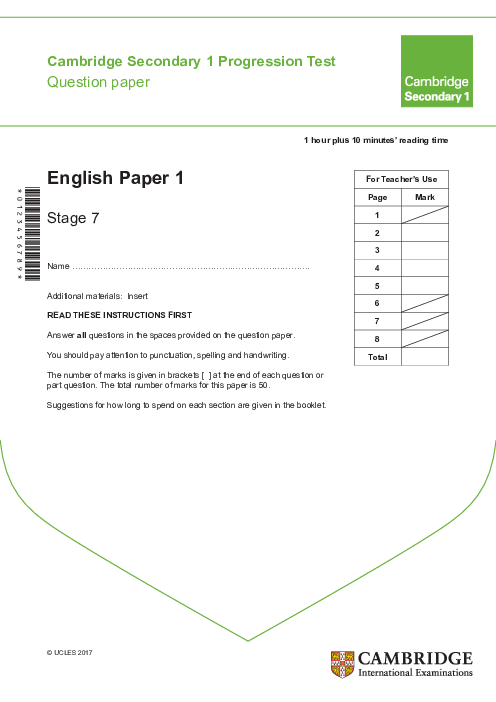Progression Test Stage 7 English 2017 Paper 1 With Mark Scheme
Emin Sahin
1. Reading comprehension—historical use and evolution of coracles, contemporary uses, writer′s opinion, comparison with kayaks, fact extraction
2. Language techniques—passive voice usage, structure and tone (informative vs. persuasive), pronouns for engagement, rhetorical questions
3. Structural elements—opening and closing sentence contrast, fact file completion, headline and imperative effects in Text B
4. Purpose analysis—Text A to inform, Text B to persuade, sentence structure and technique differences, engagement with reader through ‘you’ and ‘we’
5. Writing task—persuasive article for tourism, use of descriptive language, listing attractions, persuasive strategies like rhetorical questions and emotive language
6. Assessment goals—vocabulary understanding, summarization skills, inference, use of persuasive and informative structures in writing and analysis
See More Progression Tests 4 months ago
English 7 Subject directory
All resources in one place
Related Past Papers
Related Tutorials
Crash report

